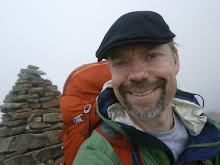29er's have overtaken mountain bike racing. Where a few years ago they were the new odd duck, now wagon wheeled bikes rule everything from the world cup circuit to the local xc series. But just how tall does a rider need to be in order to race on a 29er? Some expert bike fitters state that 29er's won't fit anyone under 5'8", others suggest that 5'10" is the minimum height to make the geometry work. My experience suggests otherwise.
Lets begin with some personal background; I am 5'5" with short legs and a long relative reach. My cyclocross and road bikes have 53.5cm top tube length. I come from a road sprinting background (crits and up hill field finishes were my forte). My technical skills in singletrack have been my biggest limiter in 7 years of occasional mountain bike races. My last mountain bike was a Trek Top Fuel, a super light 4" travel dual suspension 26" wheel bike. I was happy with the Top Fuel. It was comfortable and light. It was stiffer and faster than the few other mountain bikes I had ridden.
For the past 2 years my much more experienced mtb racer friends have praised 29ers. They hyped the better climbing, the faster descending, and the improved clearance over obstacles on singletrack. I was dubious. I didn't like the idea of pushing heavier wheels. I was intrigued though by the talk of better handling in singletrack. Could it be true? And what about my,eh-hem, short stature?
My decision to try a 29er was influenced by Emily Batty's equipment from 2011 and 2012. Emily is 3" shorter and 30 lbs lighter than me. When she raced for Trek World she raced a 26" hardtail, but when she was signed by Trek-Subaru (and when Gary Fischer & Trek fully merged) she had the option of the 26" hardtail, a Top Fuel dualie, or the 29er. She has exclusively raced on the 29er for two seasons, including to a world cup podium.
But she is a pro and rides with an extreme set up to make the geometry fit. So would I be able make a 29er work? I borrowed a 15.5" Gary Fischer Genesis for a week to try it out. I found from the first ride that I could climb and clear obstacles much better. Riding over roots and rocks was now fun instead of frustrating. I had to adjust my body position on fast descents, but it was not an extreme adjustment.
I bought a 15.5" Trek Superfly in the beginning of May. I immediately swapped to a zero set back seat post. After a few weeks I also switched to a longer 9mm -10 degree stem and zero rise bars. The bar drop is 1 cm higher than my cyclocross position while the reach to the bar flats is the same as my CX bikes. (despite the angle in the picture there is a 1.5cm drop from the saddle to the bars)
I kept the G2 geometry fork and ride 2.25" tires most of the time. I have no issues with toe overlap. I have adjusted my turns when the angle is greater than 90 degrees, but I believe that is true of all 29ers. The wheel base on the Superfly is only 1.5cm longer than the Top Fuel. I also find that I can climb out of the saddle regularly where I could not on any 26" bike. With my reach and upper body strength I like to be able to push more on the front end of the bike while maintaining balance. So far I can descend just as fast, climb a little faster, and bomb through lumpy rocky rooty singletrack like I never could before. I'm still working on tight turns, but I do not find that to be much of an issue.
Is a 29er for everyone 5'4" to 5'7" tall? Probably not. If you have a shorter reach and like to spin rather than mash gears, a 29er will be a difficult fit. If you have great technical skills and like sharp turning bikes, a 29er will feel mushy. If you can already climb like a goat, the heavier wheels might feel sluggish. But if you're a hard sprinting, big quad, bomb down the hill, meatball like me, a 29er may change your mountain bike riding for good.





No comments:
Post a Comment